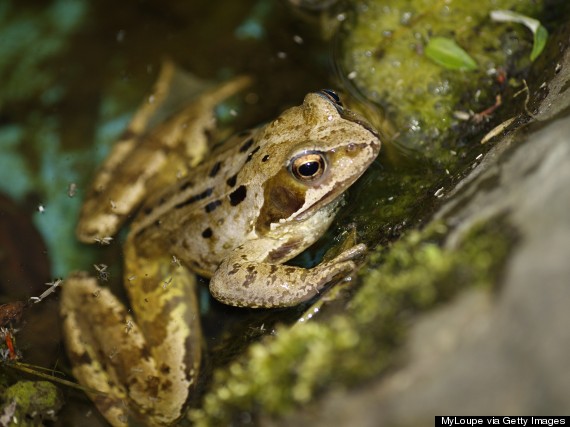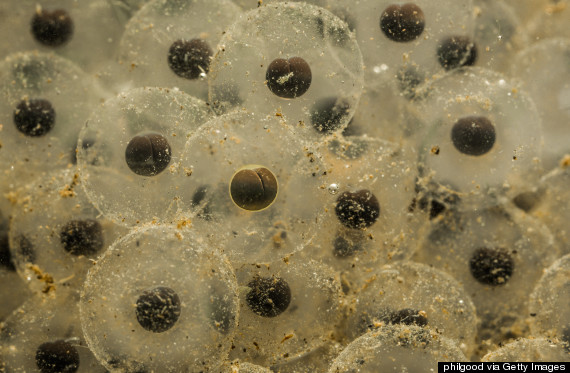
Milk can go bad four hours into a blackout, even if it's kept in a closed refrigerator. But rather than letting a power outage make us feel powerless to store food, or otherwise live our lives, we can usually find inspiration among the timeless life hacks our ancestors passed down from simpler eras.
Some are obvious, like burning candles for light, burning wood for heat and wearing cotton to stay cool. Others, however, require a longer leap of faith. If you really need to preserve milk in a lengthy blackout, for example, you could try the old Russian and Finnish trick of dropping in a live frog.
People in Russia and Finland did this for centuries before modern refrigeration, and the technique reportedly survived into the 20th century in some rural areas. Yet iceboxes and electric refrigerators eventually made it obsolete, letting it fade from use and become seen as an old wives' tale.
Thanks to modern science, we now know the frog-in-milk method works — and why. Of course, science has also taught us about zoonotic diseases, so preserving milk with frogs isn't wise unless it's somehow a matter of survival. But even if this trick is too extreme for most power outages, the things we learn by studying it might still end up providing a big boost for both humans and frogs.
Amphibian pharmacists
In 2010, researchers from the United Arab Emirates reported finding more than 100 antibiotic substances in frog skins from around the world. Called peptides, these compounds make up the majority of frogs' skin secretions, providing a vital defense against bacteria in the wet habitats where frogs live. But some may also be able to protect people, and not just from rotten milk. One secretion the researchers tested, for instance, could fight the drug-resistant superbug Iraqibacter.
"Frog skin is an excellent potential source of such antibiotic agents," lead author Michael Conlon said in a statement about the study. "They've been around 300 million years, so they've had plenty of time to learn how to defend themselves against disease-causing microbes in the environment. Their own environment includes polluted waterways where strong defenses against pathogens are a must."

Rana temporaria (Common Frog).
Different frogs make different peptides, though, and many also make toxins to repel predators. Combined with their ability to spread pathogens such as Salmonella and Mycobacteria to humans, that generally makes it too risky to drop a random frog in your milk. Nonetheless, a species with time-tested skills in milk preservation still hops all over a swath of Europe and northwestern Asia.
In 2012, researchers from Russia, Finland and Sweden focused on that species, Rana temporaria, due to its traditional use as a milk preservative. Earlier research had identified 21 antibiotics from this species, but Moscow State University chemist A.T. Lebedev and his co-authors found 76 more, some of which rivaled prescription drugs in fighting off Salmonella and Staphylococcus.
"These peptides could be potentially useful for the prevention of both pathogenic and antibiotic resistant bacterial strains," the researchers wrote, "while their action may also explain the traditional experience of rural populations" who used the species to preserve milk.
Other frog species can probably also delay milk spoilage, but isolating their peptides to make human medicines is a different story. Scientists have tried for years to steal the secrets of frog secretions, but the compounds are often toxic to human cells and can be destroyed by chemicals in our blood. There is hope, however, as researchers continue to tweak the substances' molecular makeup.

Most frog eggs hatch within 21 days, but the newborns must then spend several weeks as vulnerable tadpoles.
Swamp spawn
While such human attention often spells trouble for wildlife, scientists say the quest for amphibian antibiotics is sustainable. "We only actually use the frogs to get the chemical structure of the antibiotic, and then we make it in the lab," Conlon says. "We take great care not to harm these delicate creatures, and scientists return them to the wild after swabbing their skin for the precious secretions."
That doesn't mean wild frogs are safe from people, though. Nearly a third of all known amphibian species are threatened with extinction, according to the IUCN Red List, ranking them among the most endangered animals on Earth. Frogs' top problems include habitat loss, invasive species, infectious diseases, climate change, pesticides and pollution, as well as harvesting for food and the pet trade.
Yet despite this bleak context, broader public awareness of frogs' disease-fighting skin secretions might actually encourage more conservation. "The research also is important because it underscores the importance of preserving biodiversity," Conlon explains. "Some frog species — including those that may contain potentially valuable medicinal substances — are in jeopardy worldwide."
Saving frogs would take on new urgency if they can really help us battle superbugs, but until then, it couldn't hurt to make your own backyard more frog-friendly. Frogs eat mosquitoes and other insect pests, so they'll probably return the favor — even if you never add one to a glass of warm milk.
